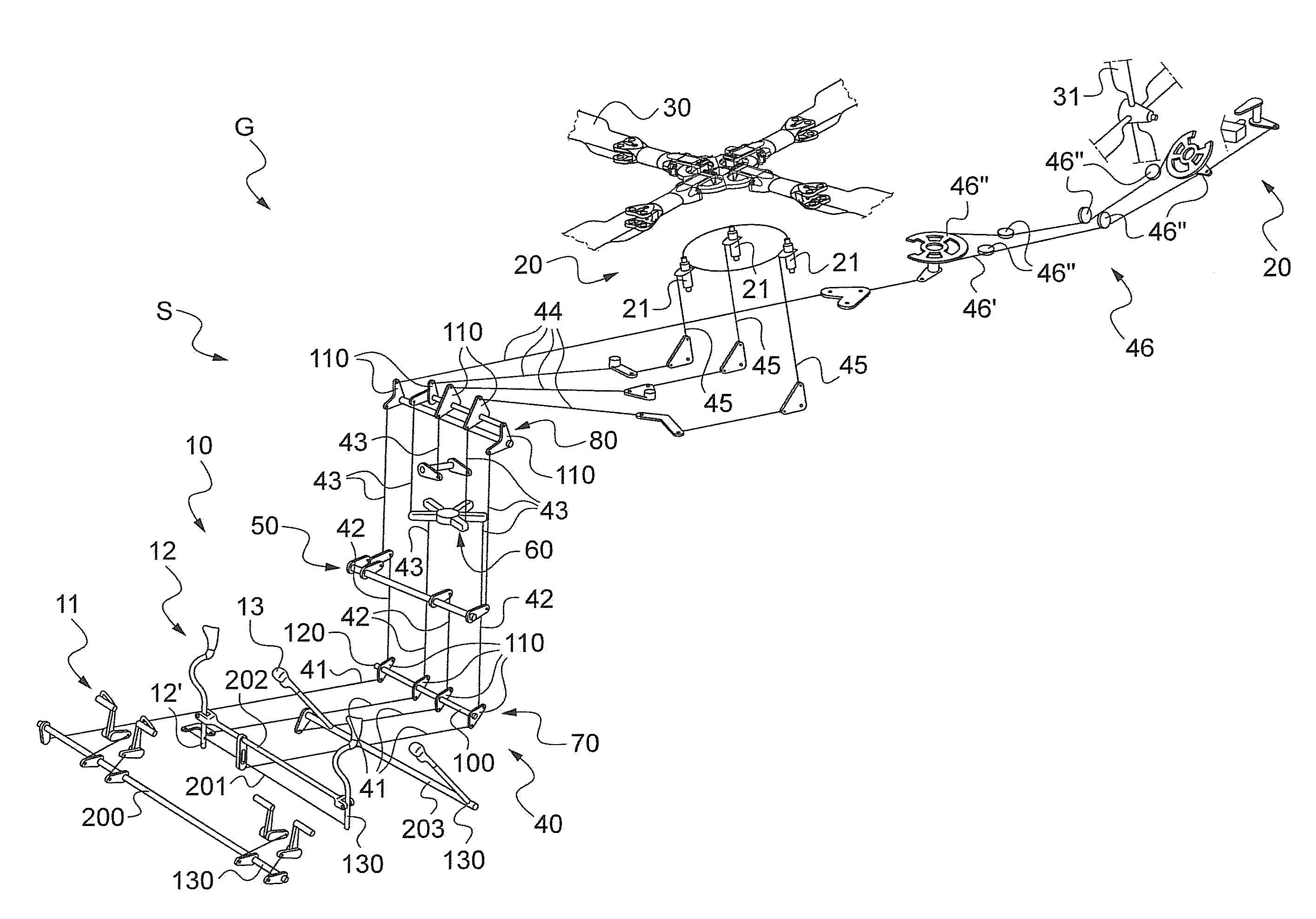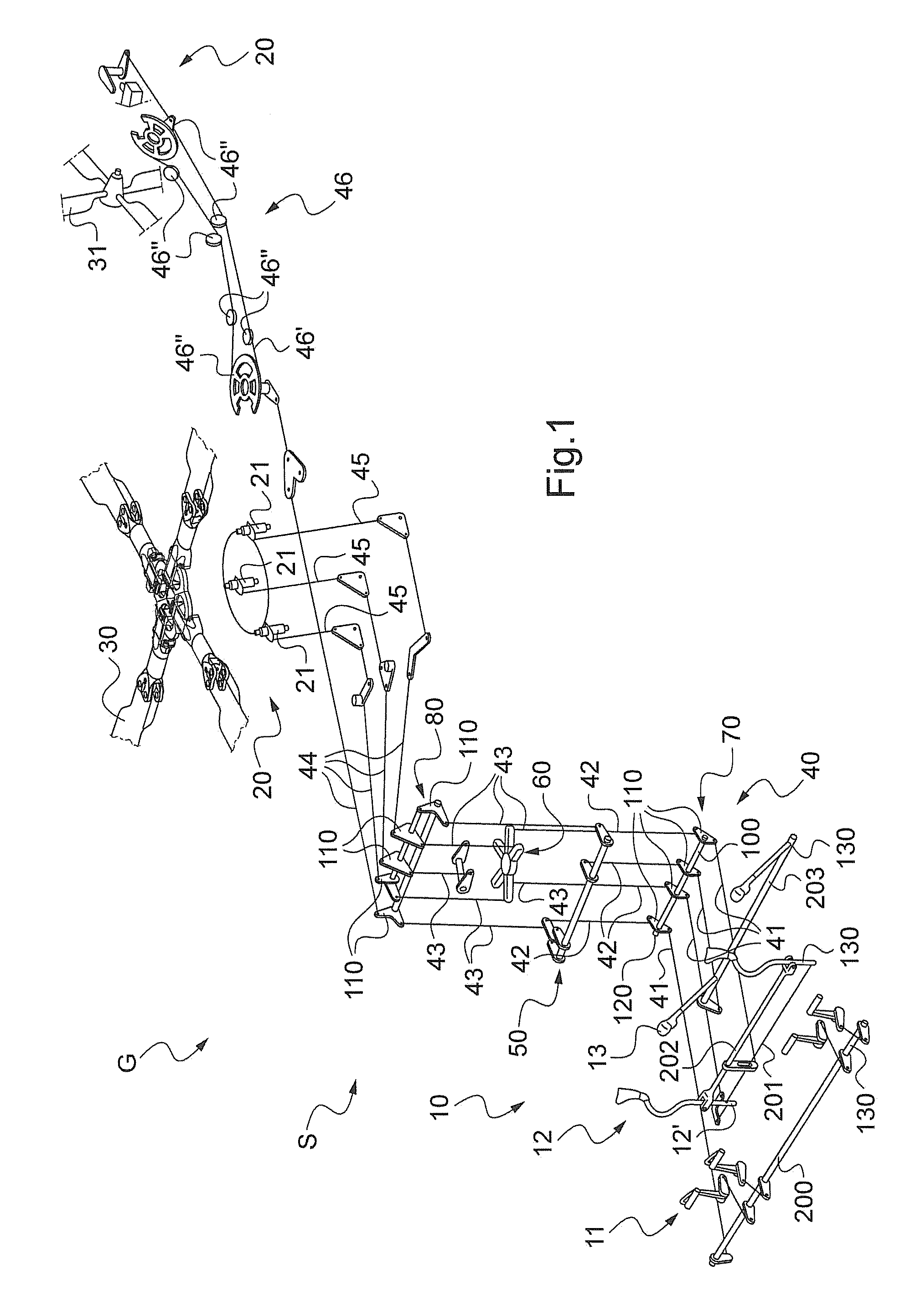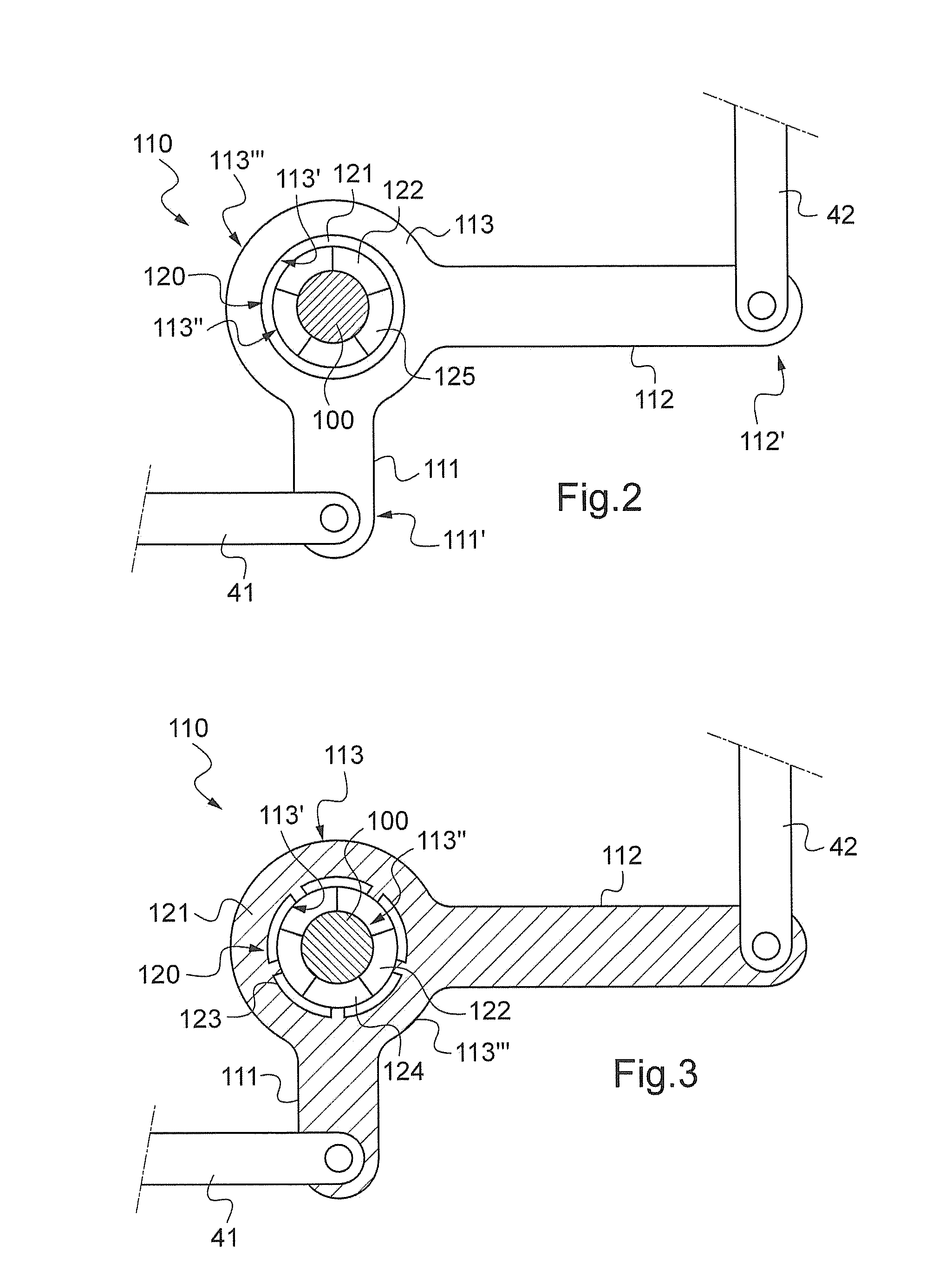Power-assisted control system for a rotorcraft
a technology of rotorcraft and control system, which is applied in the direction of rotors, marine propulsion, vessel construction, etc., can solve the problems of blade to flap, long mechanical connection, and inability to provide lift and propulsion to the main rotor
- Summary
- Abstract
- Description
- Claims
- Application Information
AI Technical Summary
Benefits of technology
Problems solved by technology
Method used
Image
Examples
first embodiment
[0057]In the first embodiment shown diagrammatically in FIG. 2, the drive rotor 121 of the motor 120 is also arranged in the central orifice 113″ and it surrounds the stator 122. In addition, the drive rotor 121 is secured, e.g. by adhesive, to the inner periphery 113′ of the transition zone 113.
[0058]Since the motor is a brushless motor, the stator 122 is provided with a plurality of electromagnetic modules 125, while the drive rotor 121 is magnetized. It should be observed that another configuration is possible, the stator 122 being magnetized while the drive rotor 121 is provided with a plurality of electromagnetic modules 125.
[0059]On being powered sequentially, the electromagnetic modules 125 create an electromagnetic field that drives the drive rotor 121 of the motor 120 to turn about the stator 122, and thus about the support shaft 100.
[0060]Similarly, the body of the crank means 110 performs an identical rotary movement. Since the drive rotor 121 of the motor 120 can turn ab...
second embodiment
[0061]In the second embodiment shown in FIG. 3, the transition zone 113 of the crank means constitute the drive rotor 121 of the motor 120. The inner periphery 113′ is then magnetized to act as the drive rotor of the motor 120. Consequently, the inner periphery 113′ may be fitted with a plurality of magnets 123.
[0062]Thus, in the first embodiment, the transition zone 113 of the crank means is secured to the drive rotor 121, whereas in the second embodiment, the transition zone 113 forms a component part as such of the drive rotor.
[0063]Finally, since the control system S includes motor control means, it is possible to envisage arranging the motor control means within the stator of the motor 120. The motor control means (not shown in the figures) are provided with members conventionally used by the person skilled in the art to enable turning movement of the drive rotor 121 to be controlled as a function of a signal received from a sensor 130 of the control system S.
PUM
 Login to View More
Login to View More Abstract
Description
Claims
Application Information
 Login to View More
Login to View More - R&D
- Intellectual Property
- Life Sciences
- Materials
- Tech Scout
- Unparalleled Data Quality
- Higher Quality Content
- 60% Fewer Hallucinations
Browse by: Latest US Patents, China's latest patents, Technical Efficacy Thesaurus, Application Domain, Technology Topic, Popular Technical Reports.
© 2025 PatSnap. All rights reserved.Legal|Privacy policy|Modern Slavery Act Transparency Statement|Sitemap|About US| Contact US: help@patsnap.com



